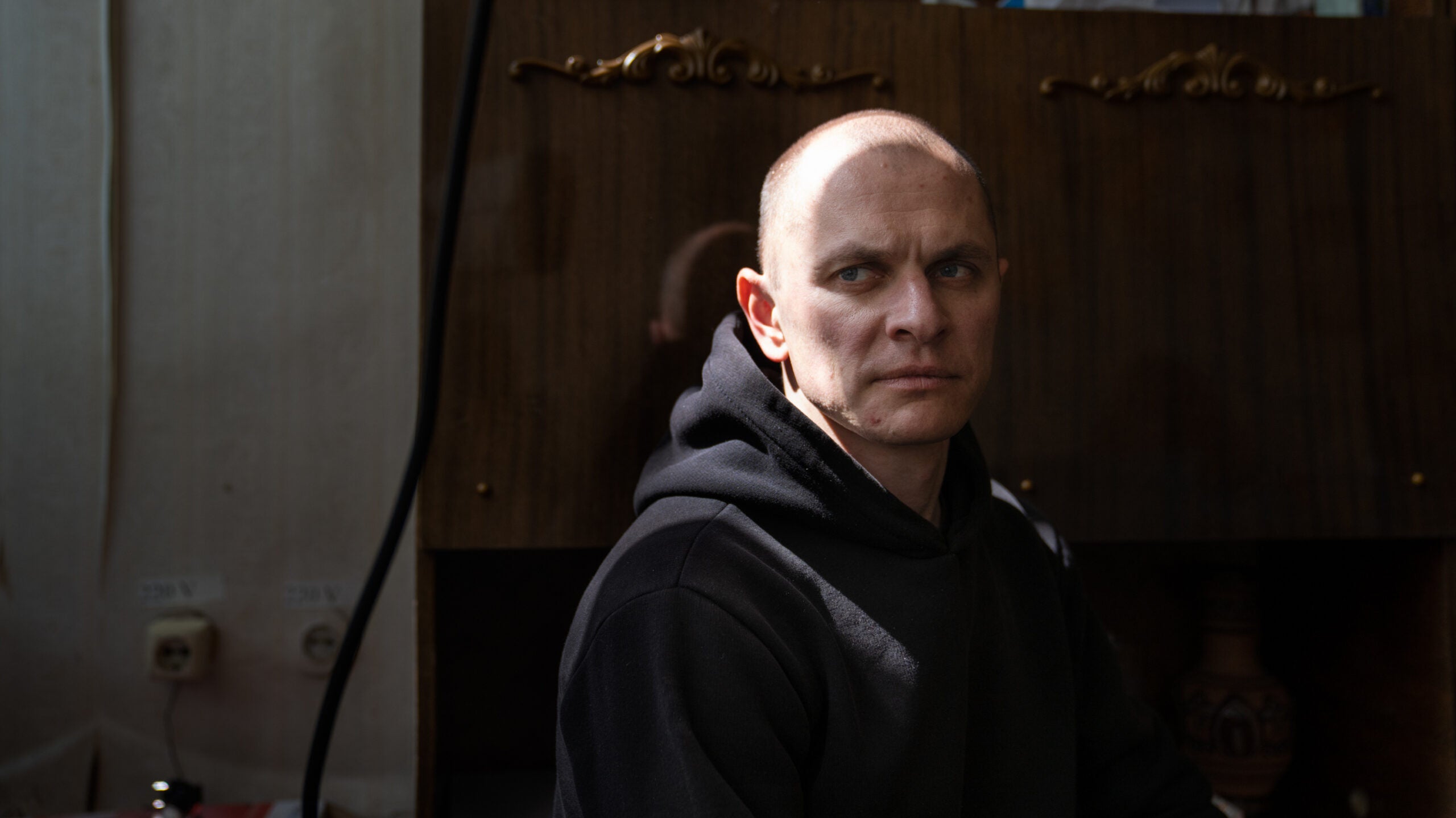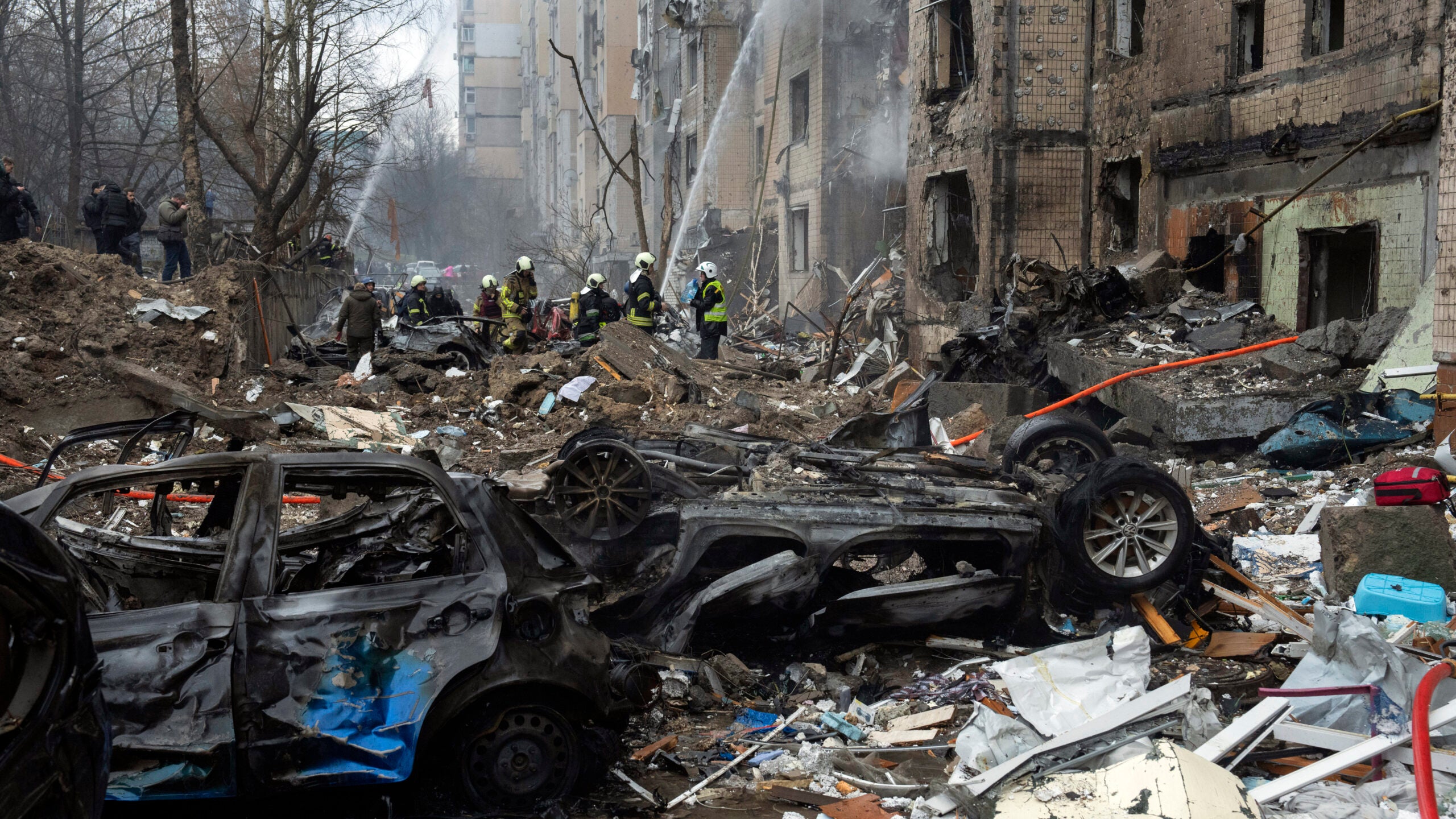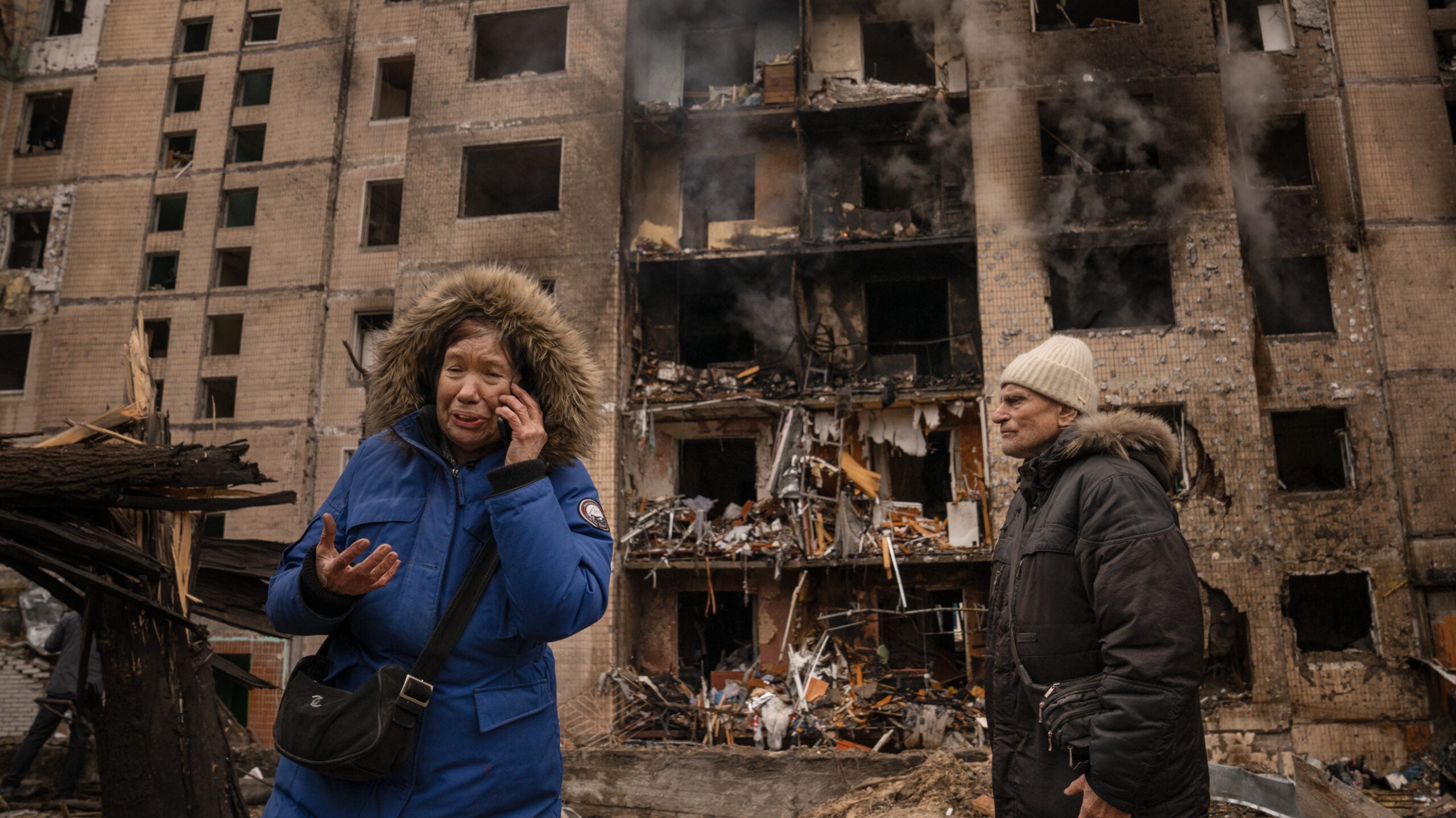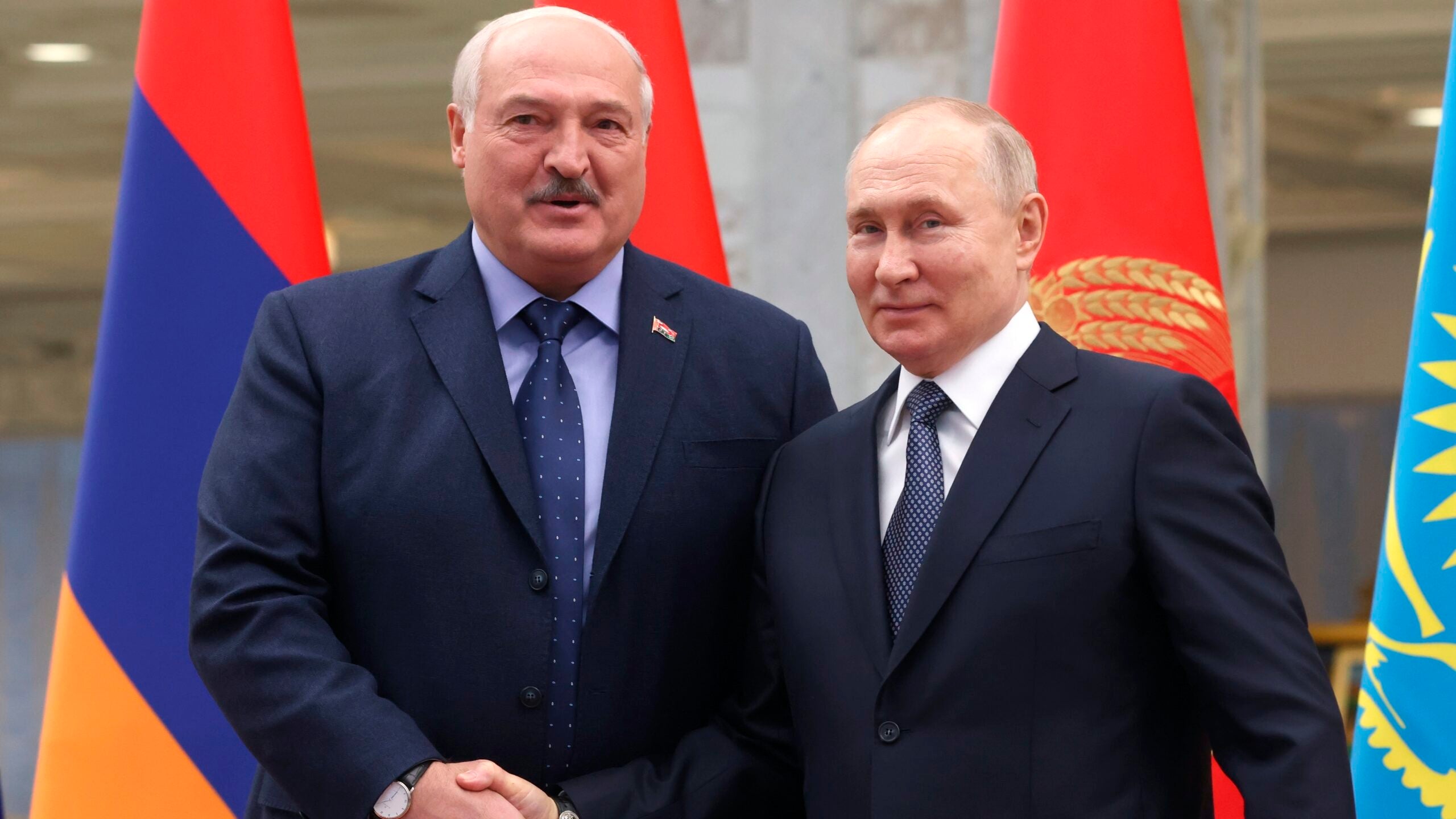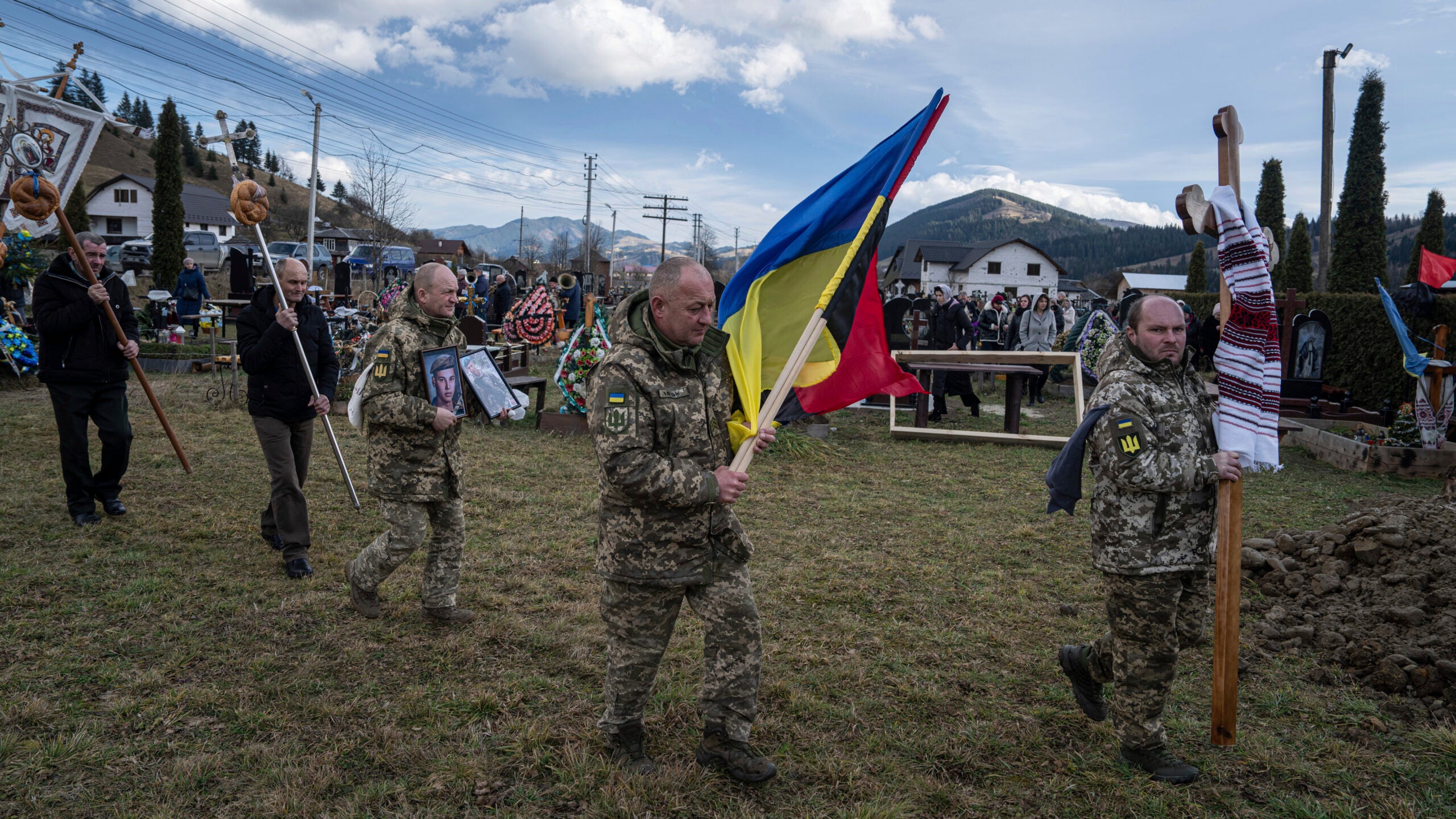KYIV, Ukraine — Six months into Ukraine’s counteroffensive this year, the battle to retake Russian-occupied land seems as frozen as the snowy winter setting in.
The heavily land-mined front line in the south has barely moved since summer. Ukraine says it has retaken less than 100 square miles of land. Russian forces are on the offensive in the east, trying to take more territory.
“Last year, people were more or less optimistic,” says Solomiia Bobrovska, a member of Ukraine’s parliament who serves on the national security, defense and intelligence committee. “But these days, they are exhausted. They are asking, ‘When will the war end?’ “
Stay informed on the latest news
Sign up for WPR’s email newsletter.
The much-scrutinized counteroffensive, launched in late spring, has become something of a touchstone for how Ukrainians and Western allies view Russia’s full-scale war more than 21 months in.
Ukrainians still talk about victory, but in more muted terms, as funerals, injuries, trauma, damaged hometowns and millions of internally displaced people are now part of everyday life. Ukraine’s military does not release casualty figures.
In a recent interview with The Associated Press, Ukrainian President Volodymyr Zelenskyy also signaled his dissatisfaction with the counteroffensive’s ground war, saying, “We did not achieve desired results. And that is a fact.”
And while Western allies say they still support Ukraine, they are distracted by the war in Gaza and Israel and are also battling internal political divisions. U.S. military and economic aid to Ukraine is set to run out at the end of the month, and it looks unlikely Congress will approve new aid before then. Meanwhile, more funding from the European Union could get held up by the pro-Kremlin leaders of member countries like Hungary.
“In Ukraine, we are trying to remind [our allies] that a decrease in the supply of weapons will lead to Russia occupying more territory here,” says Pavlo Kazarin, a Ukrainian newspaper columnist and active-duty soldier. “The Russian army will keep moving west.”
But retired Lt. Gen. Ben Hodges, a former commander of U.S. Army forces in Europe, says the counteroffensive’s ground war doesn’t tell the whole story.
He says the downbeat narrative fails to account for successful Ukrainian attacks on Russian military targets in Crimea, the peninsula on the Black Sea that Russia has occupied since 2014, and a key supply route for Russian troops.
“The Ukrainians know that whoever controls Crimea wins this war,” Hodges says.
He argues that the pressure of a counteroffensive should remain on Crimea. Otherwise, he says, “the [occupied] ports of Berdyansk and Mariupol will never be rebuilt, even after they’re liberated. And cities like Kherson, Mykolaiv and Odesa [in the south] will always be easily disrupted by the Russians.”
“Expectations kept rising”
Expectations for this year’s counteroffensive were high in part because Ukraine’s first counteroffensive in late 2022 was a clear success. Ukrainian forces recaptured parts of Kharkiv province in the northeast starting in September of last year and then the southern city of Kherson the following November.
Pressure started building right away for more quick gains, Bobrovska says, “and with each month, the expectations kept rising.”
Displaced Ukrainians like Roman German, from the southeastern occupied city of Enerhodar, started believing that they might be able to go home.
“I feel like it can happen now more than ever,” he said when NPR first spoke to him in the spring.
German used to work at the Zaporizhzhia Nuclear Power Plant, which is also occupied by Russian forces. Fighting near the plant, Europe’s largest nuclear energy station, has often set off international fears of a nuclear accident, due to shelling from both sides and the Russians’ militarization of the grounds.
In February, German fled to Ukraine’s capital of Kyiv from Enerhodar after he says Russians occupying the nuclear power plant arrested, imprisoned and badly beat him — twice. He had refused to be paid in rubles, the Russian currency. Many of his colleagues also fled and have ended up in the city of Zaporizhzhia, which is about 82 miles southwest by road from the nuclear facility. The city remains in Ukrainian hands.
At a community center in Zaporizhzhia serving some of Enerhodar’s displaced population, the halls are stocked with boxes of humanitarian aid. In a sunny room with big windows, former plant workers reminisce about their hometown while making crafts with their children.
The exiled mayor of Enerhodar, Dmytro Orlov, holds meetings in a bare-bones office. When NPR visited the community center late this spring, Orlov explained that he communicated via encrypted text and voice memos with constituents still living under occupation.
“Many are risking their lives trying to help our armed forces free the city,” he said.
“They are waiting for liberation.”
“The Russians got better prepared”
The Russians, meanwhile, started fortifying their positions almost immediately after losing their grip on the Kharkiv region and the city of Kherson last fall.
As the Ukrainians regrouped and strategized, they also waited for more sophisticated weapons from the United States and other Western allies.
“I remember in the spring everyone was talking about how we were going to get everything back, even Crimea,” says Vitaliy Deynega, a former deputy defense minister of Ukraine. “But the Russians got better prepared. They had so many trenches and minefields.”
The 2023 counteroffensive launched in late spring, with a major goal to reach the occupied cities of Melitopol and Berdyansk and sever Russia’s land connection to Crimea, disrupting Russian military resupply routes.
By the end of summer, Ukraine had made a few gains on the ground — but slowly and painfully. Near Zaporizhzhia, NPR met members of the 47th Separate Mechanized Brigade who trained on NATO bases and are using U.S.-supplied Bradley personnel carriers.
A company commander who asked to be identified only by his call sign, Hans, in compliance with military protocol, said the training didn’t take into account heavily mined terrain.
“And it’s our biggest challenge,” he said, “along with the enemy’s use of anti-tank weapons. The Russians know the roads and how to maneuver them.”
In another part of the southern front line, Misha, a soldier with the 35th Marine Brigade who is trained to remove land mines, told NPR that Russians retreating from a position stack explosives on top of each other “like a sandwich.” Misha only gave us his first name for security reasons.
“And we have to remove them before our soldiers can advance on the ground,” he said.
Hodges, the former Army commander in Europe, says to break through those kinds of defenses, Ukrainians need air superiority and long-range weapons.
“We, the West, led by the United States, have failed to provide Ukraine with the proper capabilities they need on the ground,” he says. “We talked for months and months about F-16s and other long-range precision weapons, but didn’t come through. And the Russians did not waste that time.”
The Crimea front
With the ground offensive effectively stalled by the end of summer, Ukrainian forces stepped up the use of sea drones, as well as Storm Shadow missiles provided by the United Kingdom and France, to attack Russian positions in Crimea.
They hit the Kerch Bridge, built by Russia after the 2014 occupation to connect occupied Crimea to the Russian mainland. They destroyed key air defense systems and military infrastructure. They hit Sevastopol, the base for Russia’s Black Sea Fleet, forcing part of the fleet to relocate.
“The Ukrainians are trying to make Crimea untenable for the Russian Navy, the Russian Air Force and Russian logistics,” Hodges says. “The Ukrainians know they will never be able to rebuild their country or economy as long as Russia occupies Crimea.”
Deynega, the former deputy defense minister who now works as a military journalist, adds that Ukraine also managed attacks on military infrastructure inside Russia.
“You need to exhaust your enemy to break through,” he says. “And when you break through, things can happen very fast.”
“All directions on fire”
As winter sets in, Ukrainian forces are fighting fierce battles around Kupiansk, a city in the northeast they liberated last year, as well as around Avdiivka, a town in eastern Ukraine that the Russians are trying to capture.
“These are intensive combat actions we haven’t seen for some time,” says Bobrobska, the parliamentary deputy on the defense committee. “So we’re going into winter with the front line on fire in all directions.”
Meanwhile, the southern city of Kherson, which Ukraine recaptured last year, is pounded daily by Russian missiles launched from across the Dnipro River in Ukrainian territory still held by Russian forces.
Ukraine has made some headway there. Ukrainian soldiers have established positions on the Russian-occupied riverbank.
Until there’s a Ukrainian breakthrough there, Dr. Oksana Tomchenko says she feels safer living in the Kherson maternity hospital she runs than in her own home. The hospital has been hit twice but has a bomb shelter that they’re expanding.
“Unless our guys force out the Russians completely,” she says, “we will all be safer underground.”
Tensions and eroding trust
As the counteroffensive heads into the new year, it also appears to have caused tensions between Zelenskyy and Ukraine’s top military commander, Gen. Valerii Zaluzhnyi, who, according to surveys by the Kyiv International Institute of Sociology, has up to a 90% approval rating.
Many analysts write these tensions off as natural. Zelenskyy is promoting a narrative of hope to keep the country’s spirits up, while Zaluzhnyi is more of a realist. In a recent essay for The Economist magazine, Zaluzhnyi said he didn’t expect a “deep and beautiful breakthrough” in the counteroffensive without more technologically advanced weapons.
Zelenskyy repudiated that assessment. One of his senior advisors said the revelations in Zaluzhnyi’s essay had made Russia’s work in Ukraine “easier”. And a legislator from Zelenskyy’s party, Mariana Bezuhla, demanded Zaluzhnyi’s resignation. (Zelenskyy’s office later said it did not support her statements.)
Public opinion polls show trust in Zelenskyy has dropped since last year, though three quarters of Ukrainians still support him. Anton Grushetsky, director of the Kyiv International Institute of Sociology, says one of the main factors of eroding trust is “that people had higher hopes for where we would be now.”
“Before the summer, people hoped that the counteroffensive would be much more successful,” Grushetsky says. “In our research people do not use words like ‘failed counteroffensive’ and they still believe in Ukraine’s future. But they are much more pessimistic.”
NPR producer Polina Lytvynova contributed reporting from Kyiv, Zaporizhzhia and Kherson, Ukraine.
9(MDAyMjQ1NTA4MDEyMjU5MTk3OTdlZmMzMQ004))
© Copyright 2025 by NPR. To see more, visit https://www.npr.org.9(MDAyMjQ1NTA4MDEyMjU5MTk3OTdlZmMzMQ004))
